Vibration Monitoring with Automated Diagnostics Can Prevent Unplanned Downtime
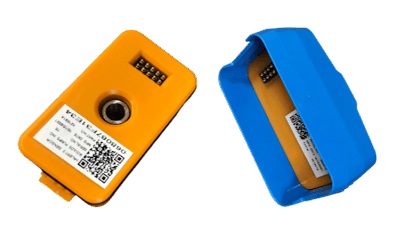
Condition-based maintenance (CBM) can include several types of monitoring methods including:
- Vibration Monitoring
- Temperature Monitoring
- Pressure Monitoring
- Power Monitoring
- Corrosion monitoring
- Leakage monitoring
- Shaft positioning monitoring
- Lubricant analysis
- Rate-of-Flow monitoring
- Rotational Speed (RPM) monitoring
- Bearing wear monitoring
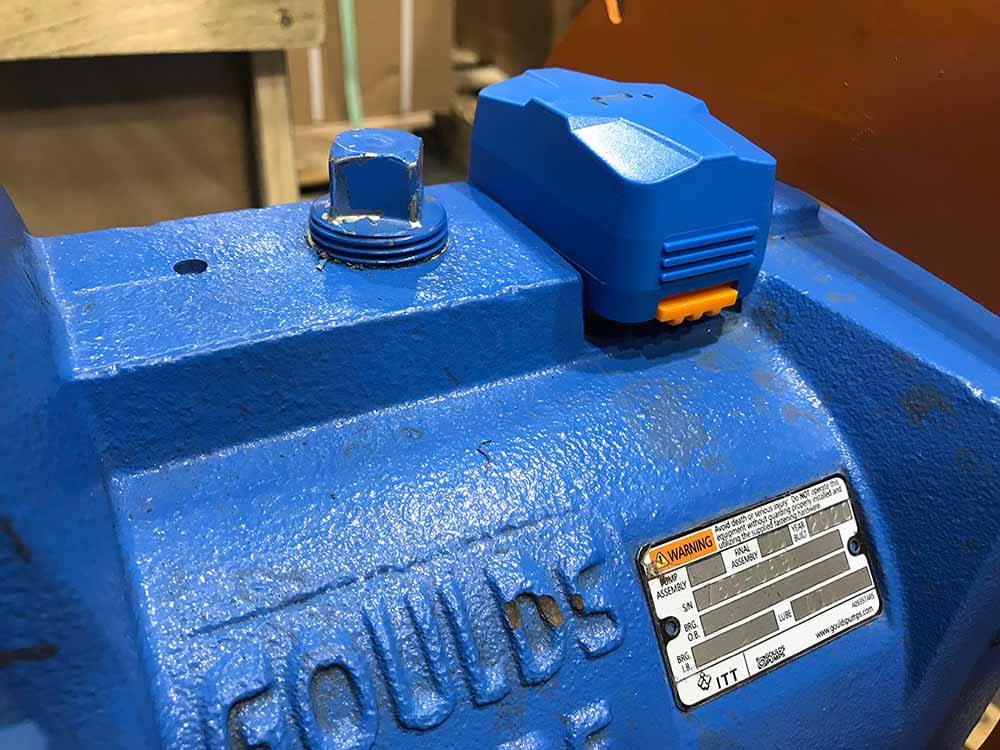
This article is going to dive into vibration monitoring and specifically examine how ITT’s i-Alert3 can provide automated vibration and temperature monitoring to economically improve your reliability and predictive maintenance program.
What is vibration monitoring?
Vibration readings are taken to determine the vibration baseline for each piece of rotating machinery. Later readings are compared to the baseline for changes as an indication of potential health or condition deterioration, and converted to vibration spectrums for analysis.
It is important to note that the baseline spectrum is unique for each and every pump. Even two pumps of identical specifications can have baselines which are slightly different. Therefore, it is necessary for every pump to be monitored individually.
What problems can vibration monitoring detect in pumps?
A vibration monitoring device may detect the following problems with your pump:
- Bearing problems
- Rotating element imbalance or misalignment
- Issues with the equipment support system such as soft foot
- Damage to the gear tooth
- Loose connections
- Electrical failures
- Eccentric or broken rotor bars
- Coupling or drive belt problems
- Cavitation or other intermittent process issues
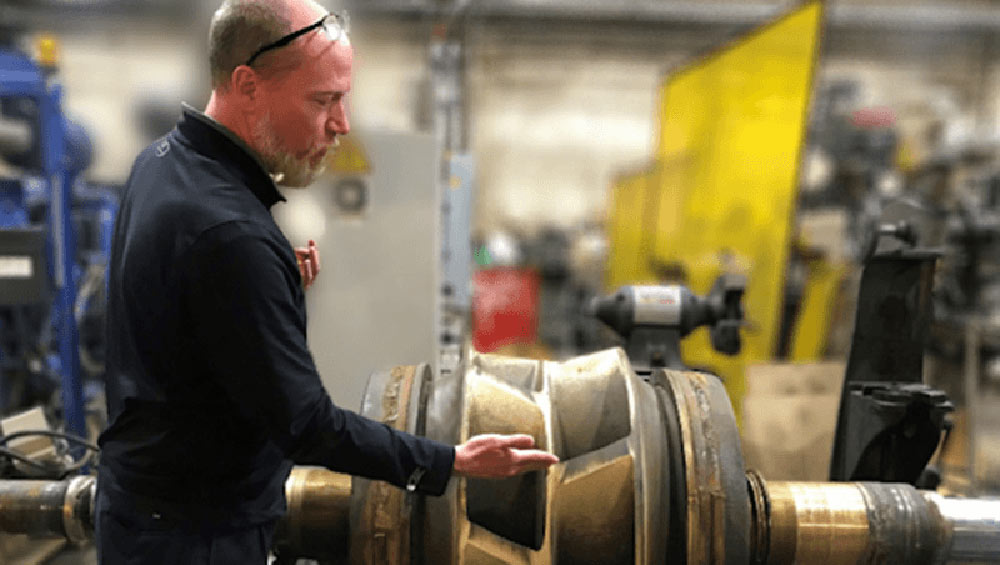
Sr. Applications engineer Rob Greve explains how this 27,000 GPM, critical process pump ran to failure, and how in the future issues could be detected earlier. Vibration spectrums, temperature, and nearly continuous monitoring all lead to levels of predictive maintenance that would have been unobtainable in the past.
What to do after an issue is detected?
While vibration monitoring will alert you to changes in vibration indicative of a potential issue, it may not specifically output the exact cause. After changes are detected, a more thorough analysis of the vibration data must be conducted. This analysis can be conducted in-house by your reliability team or outsourced to a team of skilled repair technicians, or can be performed by an automated system.
i-Alert offers automated diagnostics, providing actionable interpretations of the vibration data that can be addressed by your in-house reliability team. Optionally, Geiger can offer remote monitoring of equipment for cloud-connected i-Alert sensors.
What is ITT’s iAlert3 sensor for vibration monitoring?
The i-Alert3 is ITT’s latest advanced machine health sensor that monitors and logs the temperature and vibration of any rotating equipment. The sensor can be mounted magnetically or through a stainless steel adapter and it can be mounted in locations that were traditionally difficult or dangerous to access for hand-held wanding.
Data collected from i-Alert sensors, including trending data and automated analytics can be cost effectively collected with Bluetooth enabled devices, or with a cellular gateway. Data points can be exported and emailed with one-click reporting, or can be pushed to an optional cloud platform which allows plant-wide monitoring, alarm notifications, and asset history to be accessed in one easy to use, cloud based platform.
The i-Alert’s battery-operated sensors work for 3-4 years under normal use, at which point, the battery can be replaced. The i-Alert3 is currently the only intrinsically safe vibration sensor with a replaceable battery inside a hazardous area.
How to use ITT’s i-Alert3 for vibration monitoring?
The first step in vibration monitoring is to determine the pump’s vibration baseline. To gain a baseline, mount and activate your i-Alert sensor. Sensors are typically mounted over bearings of rotating equipment. Allow the sensor to run and collect enough data to determine the machine’s baseline. It is important to note that the baseline needs to start collecting only once the machine is operational. You cannot collect a baseline prior to the machine being turned on and used consistently or else it will register very low or nonexistent vibrations that will cause an alarm once the machine is fully operational.
Once the baseline is determined, the sensor takes regularly spaced vibration readings in the three axes and compares them to either baseline readings or user-input thresholds to identify emerging issues. Like traditional vibration analysis, the i-Alert system performs a Fast Fourier Transform (FFT) to provide a vibration spectrum of the data. It then analyzes this data to provide clear, actionable advice to the user about any issues detected and the severity of the problem, so the user knows if the issue needs to be addressed immediately or if it can wait for the next shutdown.
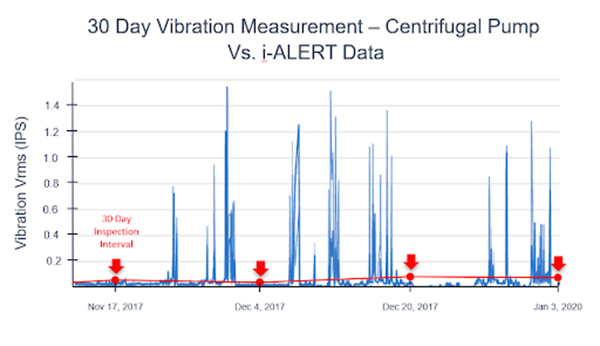
Wanding programs take measurements at widely spaced intervals, often missing critical events. i-Alert’s near continuous monitoring provides a detailed, view of machine health and trends.
i-Alert sends pump data and diagnostics to a mobile app or the cloud. Data can be remotely monitored, and optionally transferred to other systems.
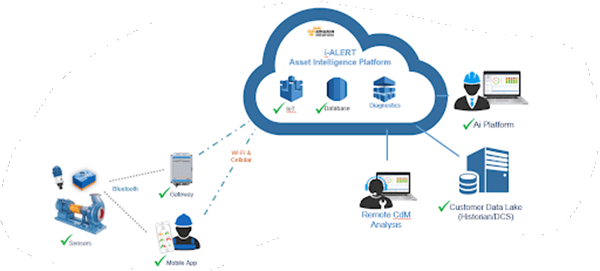
Automated Diagnostics provide interpretation of vibration data. Recommendations will provide the expected source of vibration, such as misalignment, and also guidance regarding the severity of the issue so you know if the issue is an emergency, or if repair can be scheduled as convenient.
Contact Us!
Geiger offers control and monitoring solutions designed for pumps, blowers, vacuum pumps, and fans. To learn more about our capabilities and how we can support your system, contact us today.
